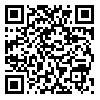دوره 11، شماره 1 - ( 10-1398 )
جلد 11 شماره 1 صفحات 40-31 |
برگشت به فهرست نسخه ها
Download citation:
BibTeX | RIS | EndNote | Medlars | ProCite | Reference Manager | RefWorks
Send citation to:



BibTeX | RIS | EndNote | Medlars | ProCite | Reference Manager | RefWorks
Send citation to:
Rezaei S, Bakhtiyari S, Assadollahi K, Heidarizadi S, Moayeri A, Azizi M. Evaluating Chondroitin Sulfate and Dermatan Sulfate Expression in Glial Scar to Determine Appropriate Intervention Time in Rats. BCN 2020; 11 (1) :31-40
URL: http://bcn.iums.ac.ir/article-1-1156-fa.html
URL: http://bcn.iums.ac.ir/article-1-1156-fa.html
Evaluating Chondroitin Sulfate and Dermatan Sulfate Expression in Glial Scar to Determine Appropriate Intervention Time in Rats. مجله علوم اعصاب پایه و بالینی. 1398; 11 (1) :31-40
چکیده:
Introduction: The proteoglycans of the extracellular matrix increases in the glial scar during spinal cord injury and significantly affects the inhibition of axonal regeneration.
Methods: The results of injury therapies are limited due to the lack of identifying a timely therapeutic intervention. The present study aimed to investigate the glial scar Chondroitin Sulfate (CS) and Dermatan Sulfate (DS) levels at different post-injury times to determine the appropriate time for therapeutic intervention.
Results: By this experimental study, 72 Wistar rats were randomly divided into 12 groups, as follows: control, sham, injured animals at 1, 2, 4, and 8 days, as well as 2, 4, 8, 12, 16, and 20 weeks post-injury. The animals in the injured groups were contused in the T10 segment of the spinal cord. The motor function of animals was assessed using the Basso, Beattie, and Bresnahan (BBB) test. Besides, the histological assessment was performed using Luxol Fast Blue and Bielshovisky Staining. The CS and DS levels of lesions were measured using the Enzyme-Linked Immunosorbent Assay (ELISA) method.
Conclusion: The motor function assessment indicated a relative recovery over time. Histological results confirmed some regeneration in the injury site at 20 weeks post-injury. The ELISA results demonstrated a much higher level of DS than that of CS in the glial scar. Considering high levels of DS, compared to CS in the glial scar and its reduction from second weeks after SCI onwards, the second week after SCI seems to be the best time for therapeutic interventions in terms of scar permeability.
Methods: The results of injury therapies are limited due to the lack of identifying a timely therapeutic intervention. The present study aimed to investigate the glial scar Chondroitin Sulfate (CS) and Dermatan Sulfate (DS) levels at different post-injury times to determine the appropriate time for therapeutic intervention.
Results: By this experimental study, 72 Wistar rats were randomly divided into 12 groups, as follows: control, sham, injured animals at 1, 2, 4, and 8 days, as well as 2, 4, 8, 12, 16, and 20 weeks post-injury. The animals in the injured groups were contused in the T10 segment of the spinal cord. The motor function of animals was assessed using the Basso, Beattie, and Bresnahan (BBB) test. Besides, the histological assessment was performed using Luxol Fast Blue and Bielshovisky Staining. The CS and DS levels of lesions were measured using the Enzyme-Linked Immunosorbent Assay (ELISA) method.
Conclusion: The motor function assessment indicated a relative recovery over time. Histological results confirmed some regeneration in the injury site at 20 weeks post-injury. The ELISA results demonstrated a much higher level of DS than that of CS in the glial scar. Considering high levels of DS, compared to CS in the glial scar and its reduction from second weeks after SCI onwards, the second week after SCI seems to be the best time for therapeutic interventions in terms of scar permeability.
نوع مطالعه: Original |
موضوع مقاله:
Cellular and molecular Neuroscience
دریافت: 1397/1/20 | پذیرش: 1397/10/24 | انتشار: 1398/10/11
دریافت: 1397/1/20 | پذیرش: 1397/10/24 | انتشار: 1398/10/11
| بازنشر اطلاعات | |
 |
این مقاله تحت شرایط Creative Commons Attribution-NonCommercial 4.0 International License قابل بازنشر است. |





